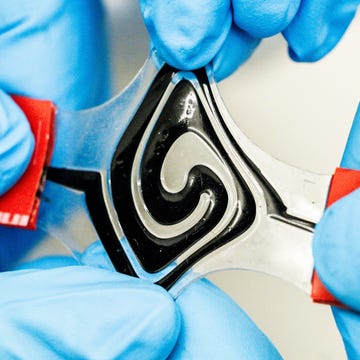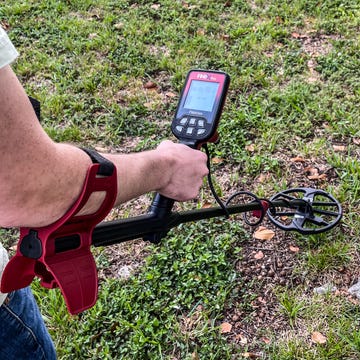As anyone who's ever put too much of the pungent green paste on a sushi roll knows, wasabi is hard to ignore. A taste of the stinging stuff sets off alarm bells on your tongue. And a Japanese team has now taken advantage of that fact for their real but really crazy-sounding invention: the wasabi fire alarm.
The research team was trying to come up with a solution to the fact that most people who are killed in building fires are asleep or elderly—either way, they don't hear the alarm. But it's hard to ignore the eye-watering burn of wasabi, so the researchers tried to use that to their advantage. First, they isolated the compound in wasabi responsible for the characteristic stinging sensation, allyl isothiocyanate. This chemical isn't an odor, it's a "somatosensation." The nervous system perceives it as a painful, stinging feeling. "In contrast to olfactory processing, somatosensory processing persists during sleep," team member Makoto Imai tells PM. "That's why subjects can wake up after inhalation of air-diluted wasabi." Their invention is now registered under a patent called "Odor Generation Alarm and Method for Informing Unusual Situation."
For their tests, Imai and colleagues filled canisters of the compound, waited until their test subjects were deeply asleep, and then filled the room with wasabi gas. Of the 14 test subjects—including four who were deaf—13 woke within 2 minutes. (It turned out that the fourteenth person had a blocked nose). The team actually tested about 100 odors, including rotten eggs. Wasabi stood alone as the premier waker-upper.
Last week, their innovation earned them an Ig Nobel prize, an award handed out by the science humor magazine Annals of Improbable Research, which every year spoofs the Nobel Prizes awarded a week later. "At first, we wondered what happened," Imai says of the odd honor. "But then, we were very delighted with this prize."
Seems, Inc., a Tokyo-based company, used the team's research to develop the alarm, which has been available since April 2009 for about $600. The company is working to create a less expensive model.
Here are the other nine Ig Nobels:
Physiology: Scientists from the University of Vienna trained a tortoise to yawn on command, then let it loose among its friends to see if its yawns would trigger the contagious yawning that humans experience. They didn't.
Medicine: An international team that showed how having a strong urge to urinate affects your decision-making capabilities.
Psychology: Karl Halvor of Norway for his paper "Is a Sigh 'Just a Sigh'?" in which he made a surprisingly thorough attempt to figure out why humans sigh.
Literature: John Perry of the United States for his theory of structured procrastination, which the committee summarizes: "To be a high achiever, always work on something important, using it as a way to avoid doing something that's even more important."
Biology: Darryl Gwynne and David Rentz, who were in Australia researching a different project entirely when they discovered that a certain kind of beetle likes to try to mate with a certain kind of Australian beer bottle.
Physics:Researchers from France and the Netherlands, for finding out why discus throwers get dizzy while spinning.
Mathematics: Individuals across the globe who predicted that the world would end at various times, for "teaching the world to be careful when making mathematical assumptions and calculations."
Public Safety: John Senders from Canada, who ran a series of experiments in which the test subject navigated a major highway while a visor repeatedly flapped down over his face, blinding him.
Peace Prize: Arturas Zuokas, the mayor of Vilnius, Lithuania, who did what anyone who's ever been trapped by a double-parker has wanted to do: run over illegally parked cars with an armored tank.













